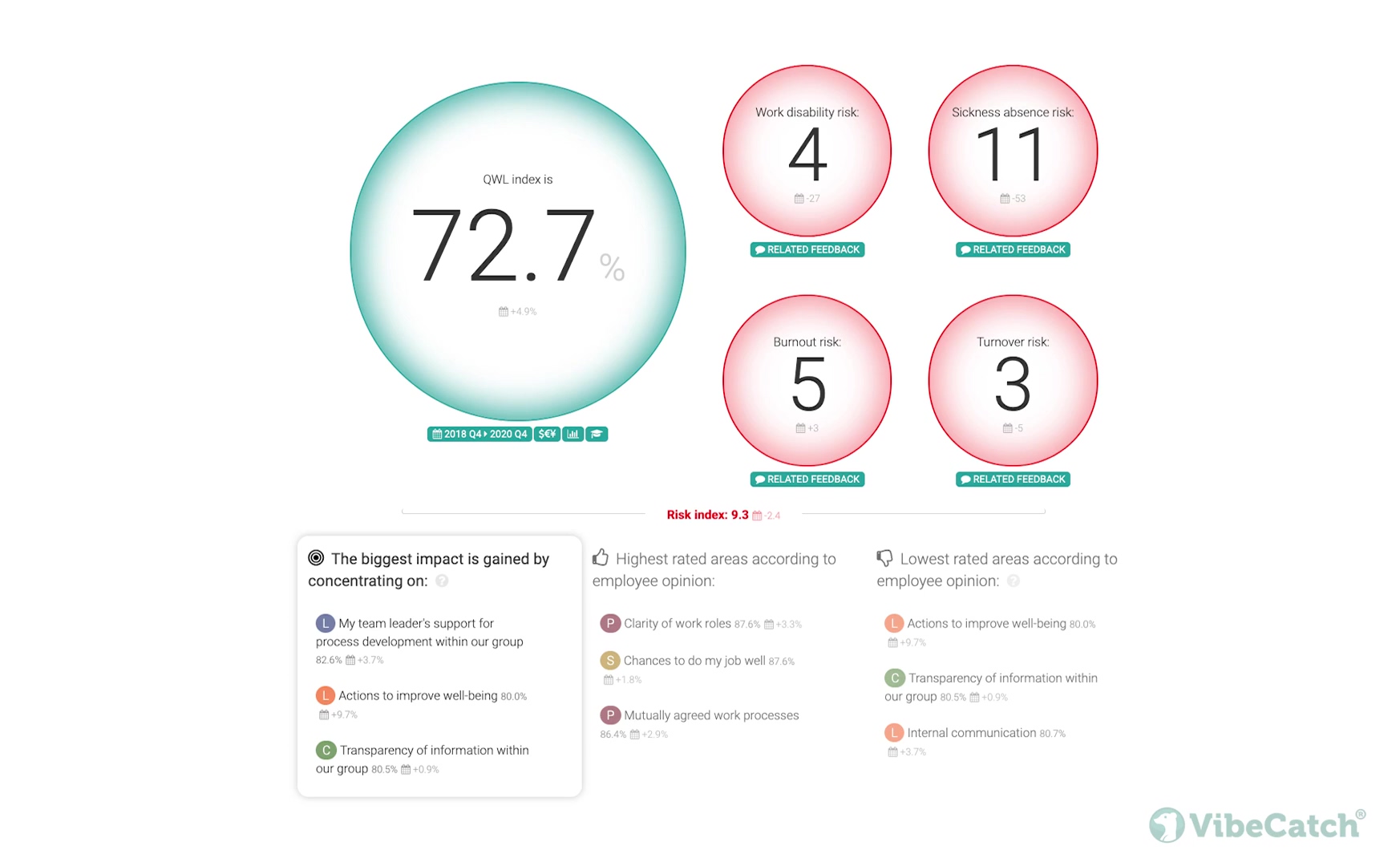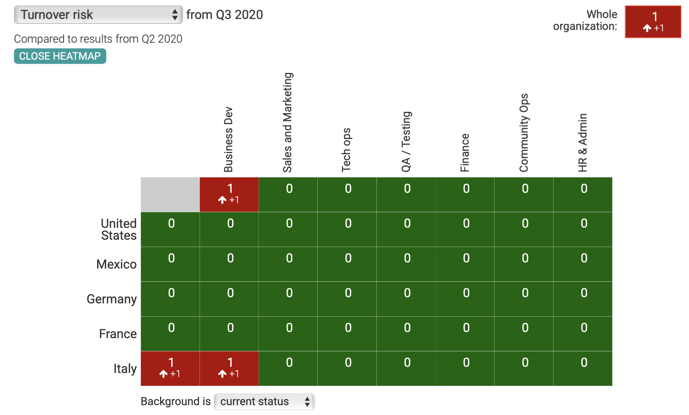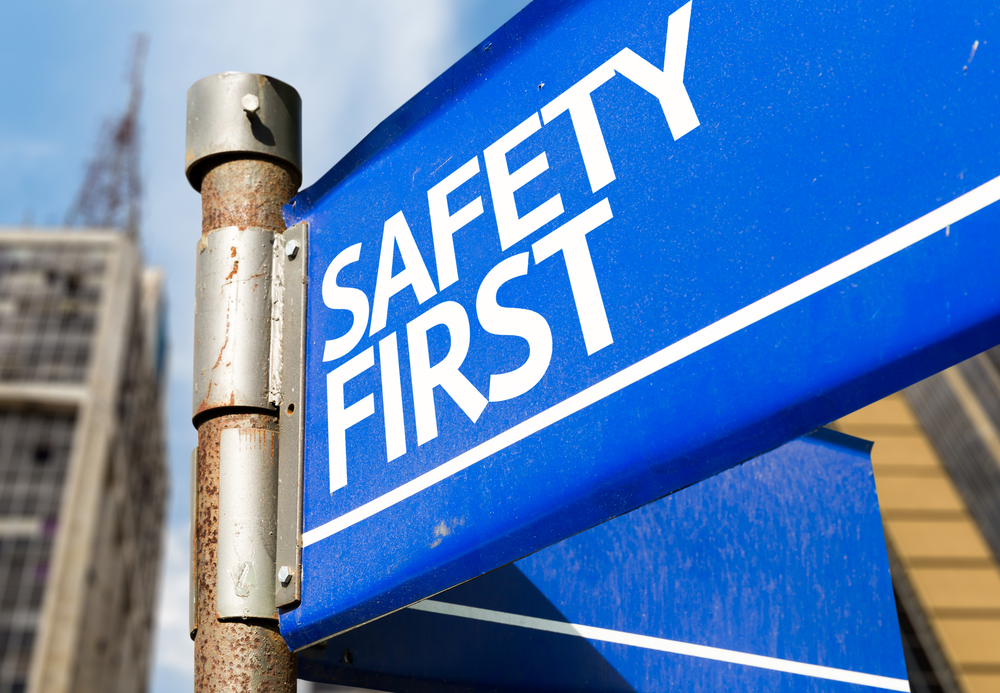Why do you think Google invests in providing office spaces that cater to various relaxation, creativity and socialisation activities for employees?
Have you ever wondered why Nike prioritises inclusion and diversity across their business, or why NVIDIA provides generous medical plan benefits for their staff?
The answer is simple.
Companies know that employees are integral for excellent service delivery and overall success. The workforce drives performance, and that’s why businesses often go over and beyond to keep people on board and motivated.
After all of the effort that goes into recruiting the best individuals, the last thing you want is to have that person leave and then deal with another cycle of hiring and training to replace them again. This is turnover, and it can cause additional expenses, lower productivity levels and poor customer satisfaction – all things businesses want to avoid.
That’s why it’s important to addressing turnover risk proactively.
Here’s what you need to know and how to do just that.

What is turnover risk?
Your business faces turnover risk if employees are leaving to look for other opportunities.
There are several reasons why turnover occurs, from low compensation and no recognition to demotivating leaders and poor organisational culture. However, turnover is most commonly rooted in employee frustration and dissatisfaction.
Allied Workforce Mobility Survey reported that companies lose 25% of new employees within the first year. Research by the Center for American Progress showed that a lot of companies spend around 16% to a whopping 213% of an employee's salary to cover the costs of finding a replacement.
These are the things that reflect how turnover risk can negatively affect how you do business. As such, even though some turnover is unavoidable, mitigating its risk can help protect your employees, customers and bottom line.

Fig 1. Quality of work life Risk index dashboard
How does turnover risk affect your business?
In this competitive business landscape we’re in, optimising employees’ capabilities helps fuel a company’s success. But that also means that when they leave, this is a huge loss too.
To deal with this potential problem, you must first recognise the different ways turnover risk can affect your business. Turnover risk, when left unmanaged, can create the following negative impacts:
- Low employee morale
With their colleagues leaving the business, your remaining staff will be burdened with increased responsibilities and a heavier workload to compensate for the lack of employees. This kind of stress can affect their well-being at work. Moreover, losing their friends can make your employees feel sad, demotivated and disengaged with the company.
- Poor service or product quality
The average staff turnover rate in Australia in 2019 was 8.5%, with the hospitality sector being the highest contributor at 17.9% turnover.
Having a lower number of employees or inexperienced new staff will lower the productivity level of your business, disrupting operations and causing unhappy customers.
- Decreased revenue
Turnover creates additional costs for your business related to hiring and training new employees. The time wasted on recruiting replacements could have been spent on activities that create more sales, increase profits and grow your business.
- Higher competition
If you fail to keep your employees, the knowledge and expertise you’ve invested in them can be used by competing businesses that might hire them to their advantage.
How to effectively address turnover risk
Addressing turnover risk requires increasing employee engagement and giving your staff more valuable reasons to keep working with you.
One thing you can do is foster a culture of training, growth and improvement. This way, your team will realise that you place importance on advancing their careers and they don’t need to look for other opportunities.
You can also show that you care for their welfare by giving employees the compensation they deserve, offering different benefits and recognising them for their hard work as they ensure your business’ success. The company’s management can also hold coaching sessions to guide workers and offer them advice whenever they feel lost.

Fig 2. QWL Heatmap showing organization wide turnover risk comparison
But the best way to deal with turnover risk is knowing its root cause and coming up with appropriate solutions that directly and proactively address employee concerns.
Understanding what your workers really feel gives you insights into which areas to improve – saving you time, money and resources as you manage the real cause of turnover risk to your business.
Fortunately, innovative tools like VibeCatch’s employee engagement QWL (Quality Work Life) surveys enable you to facilitate continuous listening. With it, you have an easier and better way to communicate with employees.
How does a QWL survey assess turnover risk?
The Quality of Work Life (QWL) survey is a pulse survey built on a scientific method that allows you to measure employee job satisfaction levels and examine workers’ overall welfare in your company.
You can rely on a QWL survey to offer relevant data and insights which help you assess where each department, employee group or worker stands in terms of turnover risk.

The VibeCatch QWL Survey is an accurate tool that can effectively measure the different risks your business is facing. It calculates QWL through three main drivers:
- Physical and Emotional Safety
- Social Cohesion and Identity
- Goals and Creativity
The Heatmap and Distribution features of our VibeCatch’s QWL Survey also assist in detecting any concern – even before turnover becomes a significant problem for your daily operations. This QWL Survey is completely anonymous and can be tailored according to your company’s requirements, ensuring you can completely optimise employee responses to resolve the causes of turnover to your business.
With our VibeCatch platform, you can now address turnover risk and find the right ways to guarantee employee loyalty.
VibeCatch is an HR platform based on 15 years of proven research, offering you the opportunity to make a difference and prove the impact that you know you make every single day for the people around you.
Through VibeCatch’s QWL Polls, Pulse Polls and 360 Feedback Polls, you can uncover hidden opportunities, correct issues and address areas of improvement for both employees and management.
Book an obligation-free consultation and we’ll discuss your options to show you how VibeCatch can help you help everyone.





